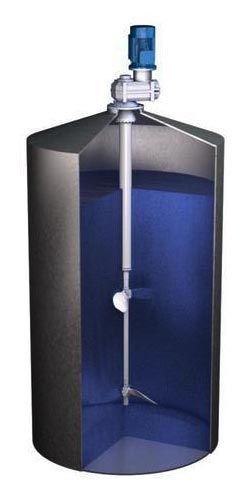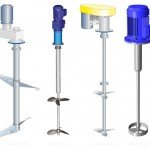Process control applications sometimes require fluids to be agitated or mixed. Agitation keeps solids suspended in a fluid. Mixing mixes multiple ingredients in solid or liquid form. This would require an Agitator or Mixer depending on the application.
When an Agitator or Mixer is required select it based on the properties of the materials being agitated or mixed, the size of the container or tank holding them, and the application requirements. Get this step right or you won’t get the desired results.
Agitator Mixer Control • the Basics
Agitator Mixer Control Panels may need to know the status of process variables to control the application. This means it may need to connect to the following devices.

- Level Sensors – when you need to insure there’s enough product to mix
- Torque Sensors – when you need to insure the mixer isn’t overloaded
- Temperature Sensors – when you need to know the product temperature
- Power Sensors – when you need to know the mixing energy
Agitator Mixer Control Panels may need to control the mixer or agitator as follows.
- Operate based on
- Remote Run / Permissive signal
- Mixing Time – when you know the Batch Curing Time, or
- Product Temperature – when you know the Batch Curing Temperature, or
- Motor Power – when you know the Batch Curing Energy.
- Agitator Mixer Motor Control
- Single Speed – Use a Motor Starter
- Variable Speed – Use a Variable Speed Drive
Agitator Mixer Control Panels may need to give an Operator the ability to turn the power on and off, control the process, and monitor the process and the status of all alarms as needed.
- Power
- Main Power Disconnect
- Control
- Hand-Off-Auto Selector, and if used
- Time Setpoint (Mixing)
- Temperature Setpoint (Mixing)
- Energy Setpoint (Mixing)
- Monitor / Display
- Running Status light,
- Alarm Status lights, and if used
- Time (Mixing)
- Temperature (Mixing)
- Energy (Mixing)

